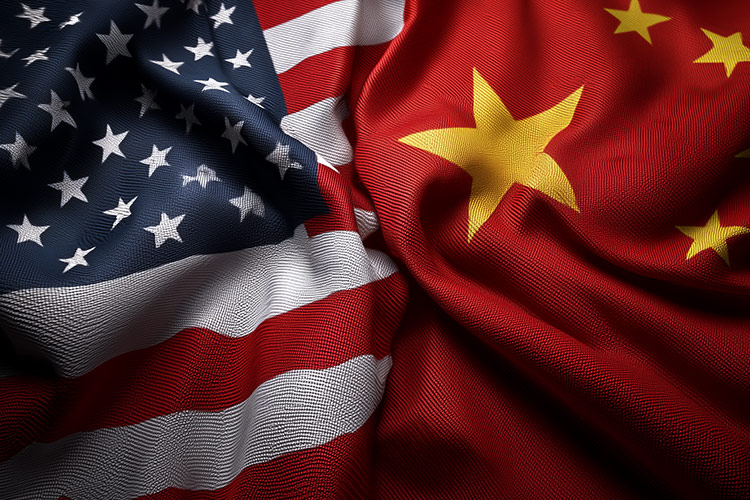
The week kicked off with a strong equity rally as investors welcomed the announcement of a US-China trade deal. Under the agreement, US tariffs on Chinese imports will be cut from 145% to 30%, while levies on the US will fall from 125% to 10%. While this shows a softening in the Trump administration’s trade stance, there is still a degree of caution, with this suspension in place for 90-days, while many other economies are also waiting to strike deals. The major US equity markets saw strong gains for the week, with the S&P 500 adding 5.3% and the Dow Jones Industrial Average rose 3.4%. Both indices returned to positive territory for the year. The tech-heavy Nasdaq Composite surged 7.2% and is now less than 1% from being positive for the year.
Also supporting market sentiment was the latest consumer price index data, whereby inflation cooled to 2.3% year-on-year in April, its slowest pace since 2021. Later in the week the producer price index slowed to 2.4% and on a monthly basis it unexpectedly dropped 0.5%. Other data was more mixed with retail sales growing just 0.1% last month and the University of Michigan’s consumer sentiment index declined for a fifth consecutive month. Earlier in the week the yield on the 10-year Treasury note broke above 4.5% for the first time since February on the trade optimism. It later pulled back but for the week it ended higher.
Chinese equities benefited from the tariff relaxation, with the Shanghai Composite up 0.8% for the week. In Hong Kong, the Hang Seng index rose 2.1%. Gains were more prevalent at the start of the week, with enthusiasm beginning to wane as an improved trade picture dampened expectations for further government stimulus to help the economy.
Japanese stock markets also advanced, but gains were more muted than other regions. Negotiations between the US and Japan are ongoing, but as of yet there is no deal. The Nikkei 225 added 0.7%. The yen had weakened against the US dollar at the start of the week on the trade news, however it picked up over the week. Another notable Asia currency mover was the South Korean won, which rallied on news that US and South Korean officials had met to discuss the currency market, with wider speculation that the US could push for a weaker dollar as part of trade deals.
European markets welcomed the trade deal as well as strong corporate earnings. The pan-European STOXX 600 was up 2% in its fifth consecutive weekly gain, with regional indices also positive. The UK FTSE 100 added 1.5%, with better-than-expected GDP data. Switzerland’s economy also grew more than expected in the first quarter, however there may have been some frontloading of activity ahead of the tariffs, with more attention to be paid on data from April onwards. Oil had a volatile week, initially rising on the trade deal, however it pared gains on news that the US may be nearing a nuclear deal with Iran, which would increase supply pressures.
Weekly macro highlights
US CPI inflation eases in April
US consumer price index (CPI) inflation rose 0.2% month-on-month (MoM) in April, following a 0.1% decline in March according to data published by the Bureau of Labor Statistics. April’s inflation print was below market expectations for 0.3% MoM. The annual inflation rate eased to 2.3% from 2.4%, the lowest rate recorded since February 2021. Core CPI inflation, which excludes food and energy prices, remained steady at 2.8% year-on-year. Shelter inflation was 0.3% MoM in April, contributing over half of the monthly rise in the headline CPI. The energy index rose 0.7% MoM, reflecting higher electricity prices which were partially offset by lower gasoline prices. A separate report published by the US Department of Labor last week showed that the US labour market remains robust. Initial jobless claims remained unchanged at 229,000 for the week ending 10 May. The data was in line with market expectations. The four-week moving average rose slightly from 227,250 to 230,500.
Japan’s GDP contracts in Q1
Japan's economy contracted 0.2% quarter-on-quarter (QoQ) in Q1, according to preliminary estimates published by Japan’s Cabinet Office. The data marked the first contraction in a year and was below both the 0.6% QoQ expansion registered in Q4 2024 and market expectations for a 0.1% decline. Q1’s downturn was driven by a 0.6% QoQ drop in exports and a 2.9% QoQ rise in imports, resulting in net exports subtracting 0.8 percentage points from QoQ GDP growth. Private consumption was flat over the quarter, while capital expenditure rose 1.4%. This resulted in a 0.9% QoQ increase in private demand, which contributed 0.7 percentage points to Q1’s QoQ GDP growth rate and provided a partial offset to the negative contribution of net exports. While GDP contracted in Q1 2025, a larger contraction of 0.7% QoQ in Q1 2024 meant that the year-on-year growth rate was 1.7%. This was above the 1.3% recorded in Q4 2024.
UK GDP growth surpasses expectations in Q1
UK GDP grew 0.7% quarter-on-quarter (QoQ) in Q1, above market expectations for a 0.6% rise. The data marked the fastest quarterly growth rate in a year and followed a 0.1% QoQ expansion in Q4 2024. Growth was broad-based, with services sector output rising 0.7% QoQ. The services sector accounts for around 80% of the UK economy, and gains were led by wholesale trade, retail, and IT. Production output increased 1.1% QoQ, driven by a 0.8% rise in manufacturing output. Business investment rose 5.9% QoQ, its largest quarterly increase in over a decade, reflecting stronger capital spending in transport and IT equipment. Exports rose by GBP 10.7 billion compared to Q4, driven by a GBP 2.4 billion increase in US-bound shipments ahead of new tariffs. Chancellor Rachel Reeves called the figures “encouraging” but stressed the need for continued discipline amid ongoing global uncertainties. The Bank of England expects growth to slow to 0.1% QoQ in Q2.
Read more articles
